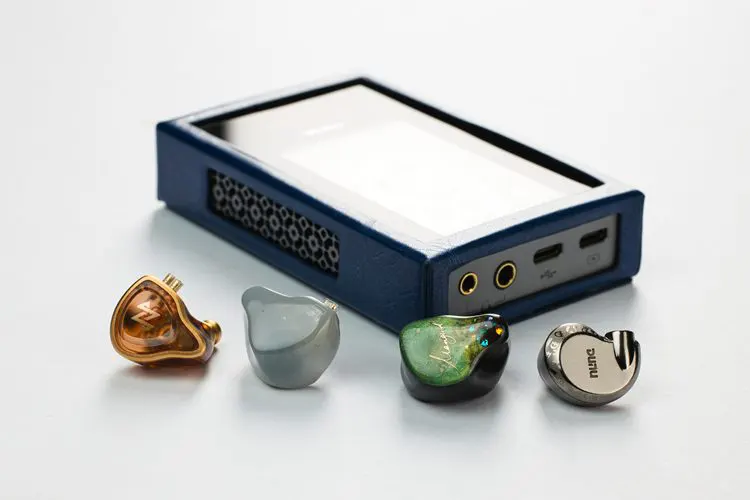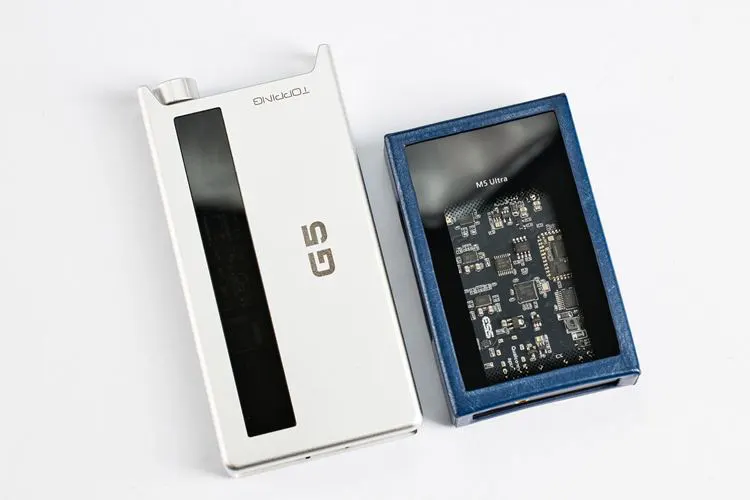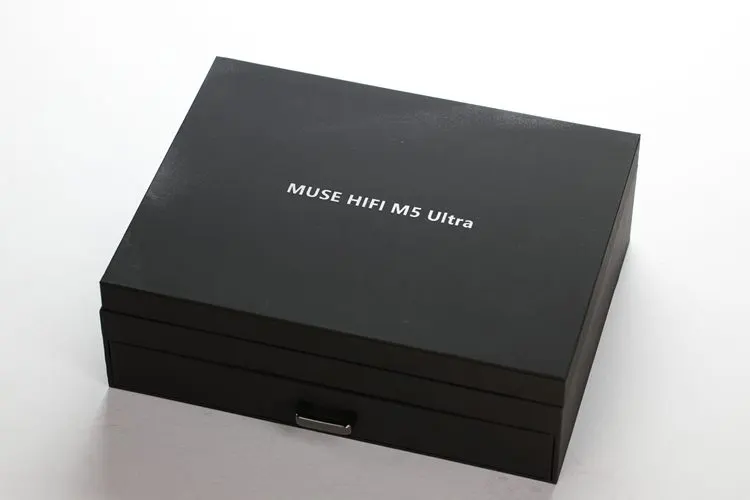Synergy
Power
Known for being difficult to drive properly, the Drop + Sennheiser HD 6XX headphone has always been my benchmark or measuring stick when it comes to gauging the driving capability of headphone amplifiers.
This is not about a mere power rating posted in the spec. sheet of the amplifier, but how it behaves when driving a difficult load, and how effortless the amplifier sounds.
Most portable amplifiers, including some dongle DACs, can drive the Sennheiser HD 6XX to satisfyingly loud volume levels, but it won’t sound like being driven properly like a desktop headphone setup would.
They usually sound thin, lacking in dynamics, lethargic, lacking in contrast, boring, and lifeless.
Not the MUSE HiFi M5 Ultra, because proper bass energy and instrument note weight are coming out of the HD 6XX, and the upper treble frequencies like sparkle sound are not being muted.
It can reach a very decent volume level, but not to a head-bangingly loud level, even in its maximum volume.
I wouldn’t say that the M5 Ultra is ideal for the Sennheiser HD 6XX, as it still needs more power and voltage coming from most high-end quality desktop headphone amplifiers to make it sing and boogie, but it is not too bad either.
I would say that it is halfway there and better than most portable amplifiers out there.
However, all that has been said in this section only applies to the solid-state mode, because in the vacuum tube mode, I hear the sound clipping and, thus, would certainly advise against using the tube mode with the HD 6XX.
IEM Pairings
Having two sound modes makes IEM pairings a lot more flexible than a tube-only setup.
For the V-shape sounding NF Acous NA20, I much prefer the vacuum tube mode, as it relaxes the treble to a very pleasant degree, and the added warmth makes the sound more inviting to be listened at louder volumes.
I highly prefer it in solid-state mode with the DUNU Falcon Ultra Ti, because while the soundstage became more spacious in the vacuum tube mode, it cannot justify the loss in imaging and holography.
There is a very noticeable drop in technical performance in the vacuum tube mode due to the very revealing nature of the Dita Audio Project M, therefore, I also prefer the solid-state mode in this set.
They sound equally good with Xenns Mangird Top, both the solid-state and the vacuum tube modes. I thoroughly enjoy its sound with both sound modes equally well.
Headphone Pairings
As discussed before in the synergy section, the M5 Ultra drives the Drop + Sennheiser HD 6XX reasonably well in the solid-state mode and is unusable in the vacuum tube mode; therefore, only the solid-state mode will be discussed in this section.
With that said, the M5 Ultra sounds reasonably well with the HD 6XX and better than most portable dongle DACs in this regard.
Selected Comparison
For this comparison to the M5 Ultra with I went with the popular Topping G5 Bluetooth DAC/amplifier.
Topping G5
The Topping G5 is a battery-powered Bluetooth DAC/amplifier with a similar feature set, function, and price to the MUSE HiFi M5 Ultra. It is well-known and recognized by many in the audio community as a very capable and good-sounding device.
Technical
It accepts digital signals up to 32-bit/768 kHz and DSD512. The Bluetooth can use LDAC, aptX adaptive HD, and other less relevant codecs. The G5 uses an ESS Sabre ES9068AS DAC chip and delivers up to 1200mW of power output on a 32Ω load.
Design
The G5 has a simple and clean metallic design with a small glass window on the front, the I/O are on top with the volume control knob, and the USB-C input and USB-C charging port, as well as the switches are at the bottom.
Performance
I would have to say upfront that the Topping G5 is much more powerful-sounding due to its very high-power output rating.
However, when it comes to sound quality, the Topping G5 verges toward the analytical, dry, and boring side; it sounds very neutral to a fault.
The M5 Ultra is less neutral even in its solid-state mode; it sounds warmer with more bass.
It also has longer and more natural-sounding instrument decay, and the treble is rendered more gently.
My Verdict
The MUSE HiFi M5 Ultra’s vacuum tube mode delivers a transparent, natural, and lifelike sound; it could have stopped short of only having a great sound in that mode, which I initially expected, but it didn’t. The solid-state mode delivers a stellar sound quality as well.
Combine that with the good feature set, good looks, and the solid performance of its Bluetooth section, and the M5 Ultra becomes a very competitive product.
At $300, and considering the performance and sound quality, the price-to-performance ratio is excellent.
So, I would recommend the MUSE HiFi M5 Ultra to those who are searching for a competitive tube and solid-state sound quality for a wide range of gear without breaking the bank.
MUSE HiFi M5 Ultra Technical Specifications
- Supported Formats: PCM up to 32-bit/768kHz, DSD supported
- Output Ports: 3.5mm single-ended, 4.4mm balanced
- Battery Capacity: 3000mAh with QC4.0+PD fast charging support
- DAC: ES9038Q2M, customized for tube architecture
- Bluetooth Chip: Qualcomm QCC5125 with support for LDAC, AptX Adaptive, etc.
- Display: Integrated display screen for settings and controls
- Qualcomm QCC5125 Bluetooth Chipset.
- Built-in JAN6418 Vacuum Tubes
- Electron Tube Shock Absorber Technology.
- Brand-New Digital Audio Purification Circuit with Dual-Independent Crystal Oscillators.
- Built-in Three-Level Gain Modes.
- Supports Seven Digital Filters.
- Tube and Transistor Dual Amplification Modes.
- Dual-Headphone Outputs(3.5mm + 4.4 mm).
- Large 3000mAh Battery With QC4.0+PD Fast-Charging Support.






